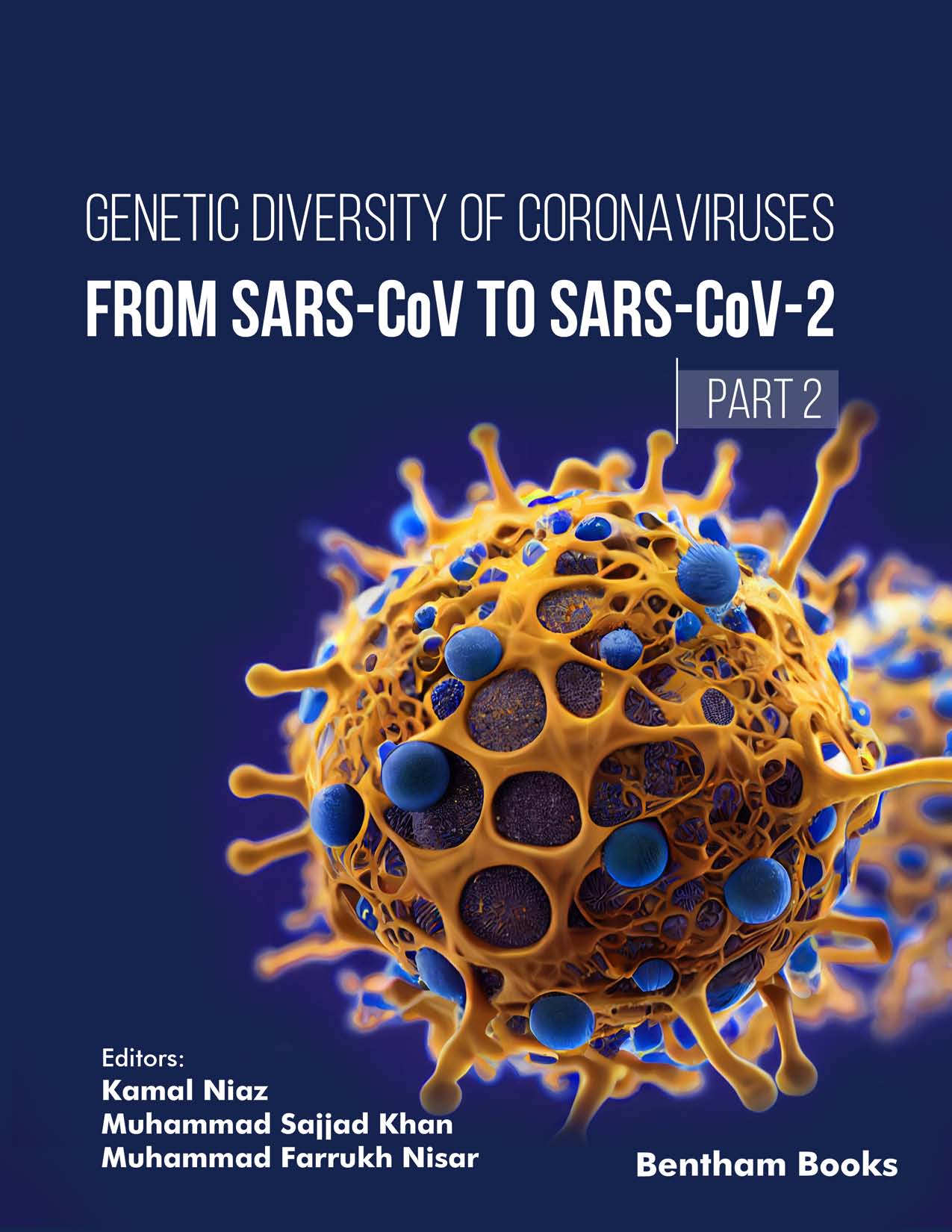Coronaviruses, such as severe acute respiratory syndrome-coronavirus (SARS-CoV), Middle East respiratory syndrome-coronavirus (MERS-CoV), and severe acute respiratory syndrome-coronavirus-2 (SARS-CoV-2) have posed significant public health threats in the last two decades. It has been revealed that bats act as natural reservoirs for these viruses, and periodic monitoring of coronaviruses in bats, dogs, civets, and other wild animals may thus provide important clues about emergent infectious viruses that transfer to humans. The Eastern bent-wing bat Miniopterus fuliginosus (M. fuliginosus) and genus Rhinolophus are distributed extensively throughout China and other countries. Therefore, there is a need to analyze the genetic diversity of coronaviruses transmitted to humans. The only coronavirus genus found was alphacoronavirus. The established alphacoronavirus genome sequences showed high similarity to other alphacoronaviruses found in other Miniopterus species and other animals. It suggests that their transmission in different Miniopterus species may provide opportunities for recombination with different alphacoronaviruses. The genetic information for these novel alphacoronaviruses will improve our understanding of the evolution and genetic diversity of coronaviruses, with potentially important implications for the transmission of human diseases. This virus is different from the previously isolated MERS-CoV and SARS-CoV and is the seventh that infects humans. SARS-CoV-2 spreads rapidly and infects a large number of the population globally. Besides, a new variant of coronavirus disease-19 (COVID-19) known as B.1.1.7 is spreading globally, especially in the United Kingdom (UK), with an unusually large number of mutations in the proteins. This variant spreads more easily and quickly than other variants. The new variant is defined by 14 mutations resulting in amino acid changes and three deletions, some of which are believed to influence the virus’s transmissibility in humans. The World Health Organization (WHO) has reported that one of the mutations identified (N501Y) is altering an amino acid within the six key residues in the receptor-binding domain. It is indicated that the rate of transmission of the variant, known as B.1.1.7 or VUI 202012/01 (variant under investigation, the year 2020, month 12, variant 01), was 71% (95% confidence interval 67% to 75%), which is higher than for other variants. It may also have a higher viral load.
In this book proposal, we consolidated the genetic diversity/mutation that occurred in 2002-21. Since SARS-CoV-2 is the closest to SARS-CoV and MERS-CoV, the approaches discussed here will be similar and/or varying by a slight degree. In the last 18-19 years, this is the third outbreak of the same coronavirus with a slight mutation that shocked the whole world. This book should be prioritized as up-to-date literature on genetic mutations that have occurred in the form of SARS-CoV, MERS-CoV, and SARS-CoV-2. It will act as a suitable reference if any such virus appears in the future. This book proposal has been classified into four parts: Part I: Genetic Mutation of SARS-CoV, Part II: Genetic Mutation of MERS-CoV, Part III: Genetic Mutation of SARS-CoV-2, and Part IV: Correlation of Coronaviruses with Various Disorders.
With the emergence of new coronavirus variants, different host tropisms permit a thorough analysis of their genomic diversity/mutations that acquire adaptability to their host. Thus, in Part I, we start the book with chapters dealing with a mutation in SARS-CoV, the host genetic diversity of SARS-CoV, newly emerging variants of SARS-CoV, the genetic architecture of host proteins involved in SARS-CoV, and the landscape of host genetic factors correlating with SARS-CoV. In Part II, a critical analysis of the MERS-CoV involves the potential to mutate its genome by opposite genetics and to get better recombinant viruses with described mutations. Such processes will assist in studying the capabilities of particular genes and their effects on virus survival and pathogenesis. These strategies can even help in determining host factors correlating with MERS-CoV genome growth and proliferation. In Part III, we discuss mutation in SARS-CoV-2, the host genetic diversity of SARS-CoV-2, newly emerging variants of SARS-CoV-2, the genetic architecture of host proteins involved in SARS-CoV-2, and the landscape of host genetic factors correlating with SARS-CoV-2. Part IV includes the correlation of coronaviruses with various disorders, especially with epigenetic alteration, neurological disorders, and artificial intelligence.
This book will appear as a baseline for scientists and health professionals to better understand the genetic diversity of SARS-CoV, MERS-CoV, and SARS-CoV-2. However, this single book would not have succeeded without the enthusiasm and determination of publishers and investigators to take time from their hectic schedules and endow on time. We thank the scrutineers who contributed, directly and indirectly, to bring it to reality.
Kamal Niaz
Department of Pharmacology and Toxicology
Faculty of Bio-Sciences
Cholistan University of Veterinary and Animal Sciences (CUVAS)
Bahawalpur 63100, Pakistan
Muhammad Sajjad Khan
Department of Breeding and Genetics
Faculty of Animal Production and Technology
Cholistan University of Veterinary and Animal Sciences (CUVAS)
Bahawalpur 63100, Pakistan
&
Muhammad Farrukh Nisar
Department of Physiology and Biochemistry
Faculty of Bio-Sciences
Cholistan University of Veterinary and Animal Sciences (CUVAS)
Bahawalpur 63100, Pakistan

